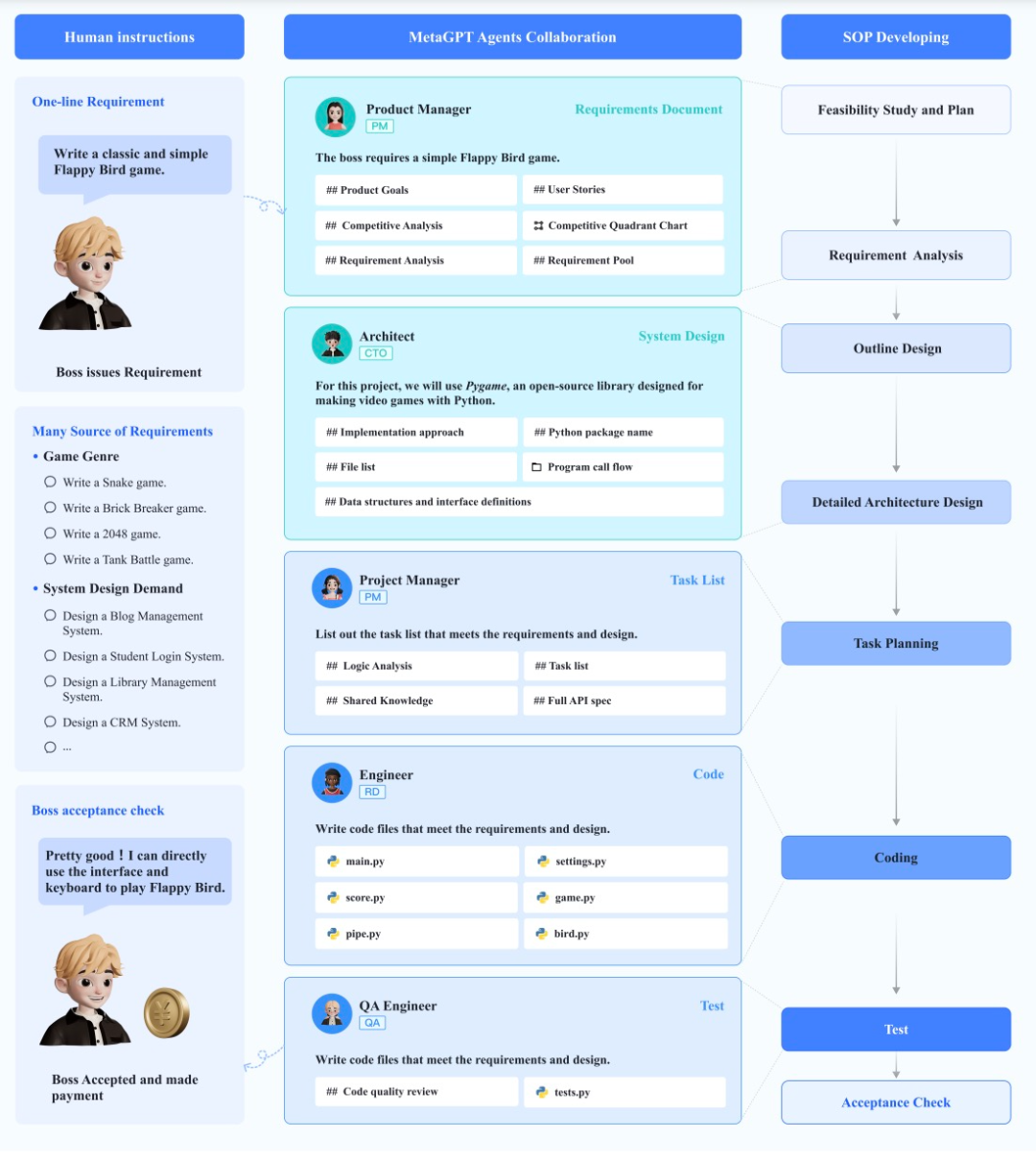
With the continuous development of large language models (LLM), using them to build AI agents has become a new research field. Past research has successfully used LLM to drive multi-agent agents to autonomously complete some tasks
. However, current research mainly focuses on simple tasks, and there is insufficient exploration of complex tasks. This is mainly because large language models have "illusion" problems, especially when multiple agents interact, the hallucination problem will be more serious, resulting in the inability to be applied to complex tasks
Recently, An open source framework called "MetaGPT" attempts to solve this problem. The goal of MetaGPT is to inject efficient human workflow into LLM-driven multi-agent collaboration as a meta-programming approach. MetaGPT quickly gained the attention of more than 11.1k stars a few days after it went online

The URL of this project is: https://github. com/geekan/MetaGPT
In summary, MetaGPT simulates the workflow of a software development company, requiring assigning roles to each agent and planning the collaboration process, similar to the personnel of a software development company Allocation

MetaGPT first embeds the standardized operating procedure (SOP) into the prompt, thus making the collaboration process of multiple agents structured . Then, the research team further modularized the output, giving the agent domain expertise equivalent to that of human workers to verify the output and reduce compound errors
MetaGPT passed the work pipeline to Different agents are assigned roles, thus building a framework that can effectively solve complex multi-agent collaboration problems and make it more cohesive

## to Taking recommendation engine development as an example, the research team demonstrated the system interface design independently generated by the "architect agent" in MetaGPT, which is a crucial step for software development

MetaGPT is capable of various complex tasks, such as developing simple game software. Its task execution process can correspond one-to-one with the standard operating procedures (SOP) of human developers

After MetaGPT receives user input requirements, the agent assumes the role of product manager and analyzes requirements and feasibility. The agent then acts as an architect, project manager, and engineer, completing software development in sequence. Finally, another agent is responsible for comprehensive testing of the software. This process simulates the real-world development process very well

Let's look at a MetaGPT complete specific development Task case. Users only need to provide a requirement, such as "Writing a blackjack game", MetaGPT will go through requirements analysis and task planning, and successfully generate the game code

The research team stated in the project roadmap: MetaGPT plans to independently complete the goal of medium-sized projects (about 2,000 lines of code) in the short term, and ultimately achieve the ability to independently train, fine-tune, optimize, apply and update

The paper can be found at the following link: https://arxiv.org/pdf/2308.00352.pdf Interested readers can consult the paper to learn more about the research topic
The above is the detailed content of MetaGPT open source framework became popular on GitHub, reaching 11,000 stars, simulating the software development process. For more information, please follow other related articles on the PHP Chinese website!




